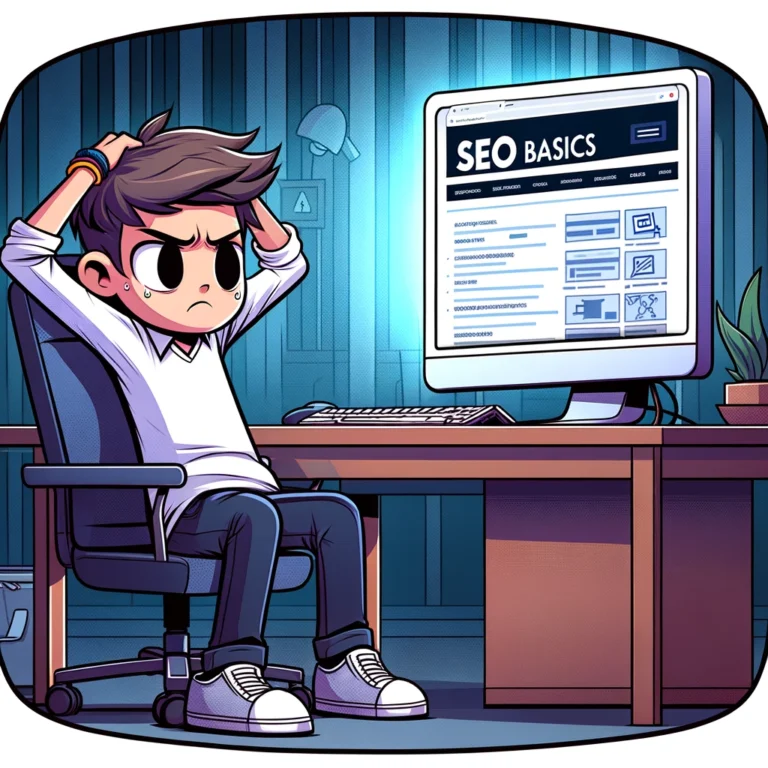Search Engine Optimization, or SEO, might sound complex if you’re just getting your feet wet in the world of digital marketing. But there’s good news: the fundamentals of SEO are relatively straightforward, and you can implement many basic strategies on your own. Today, we’re going to dive into what SEO entails and guide you through implementing and monitoring your website’s SEO strategy. Whether you’re a small business owner, a blogger, or just curious about how search engines work, this guide will equip you with the knowledge you need to start improving your website’s visibility.
Understanding SEO: What It Is and Why It Matters
Before we jump into implementation, let’s set the stage by understanding exactly what SEO is and why it’s crucial for your online presence. SEO is the process of optimizing your website so that it ranks higher in search engine results pages (SERPs). This is important because the higher your pages can rank, the more likely people are to find them. It’s not just about driving more traffic, but attracting the right kind of traffic—visitors who are likely to engage with your content, products, or services.
Getting Started with SEO: First Steps
Diving into SEO can seem daunting at first, so here’s an easy way to think about it: SEO is all about improving user experience and reflecting this through various elements that search engines prioritize. This includes content quality, keywords, site speed, mobile-friendliness, and dozens of other factors.
Setting Up a Solid Foundation
The first step in your SEO journey is to ensure your website’s structure fits both user and search engine needs. This involves setting up a clean, intuitive navigation structure. Each page should be reachable from at least one static text link, and your site hierarchy needs to be organized so that higher-value pages are prioritized.
Mastering Keyword Research
Keywords are the cornerstone of SEO. These are the terms and phrases that users enter into search engines. Your goal is to identify and integrate these keywords throughout your website’s content strategically. Use tools like Google Keyword Planner, Moz’s Keyword Explorer, or SEMrush to get started with keyword research. Look for keywords that are relevant to your niche, have a reasonable amount of search volume, and are not too competitive.
On-Page SEO Essentials
Once you have your keywords, it’s time to start incorporating them into your site. Focus on key areas such as:
- Title Tags and Meta Descriptions: These are crucial because they tell both users and search engines what your page is about. Make sure they include your primary keywords and are compelling enough to encourage clicks.
- Headings and Content: Use headings (H1, H2, H3, etc.) to structure your content and make it easier to read. Keywords should naturally be incorporated into your headings and throughout your content in a way that reads naturally.
- Alt Text for Images: Search engines can’t “see” images but can read alt text. Describing your images accurately using your keywords can help.
Technical SEO: Laying the Groundwork
Technical SEO refers to actions taken to help search engines crawl and index your website more effectively. This includes:
- Improving Site Speed: Ensure your website loads quickly by optimizing images, using a web hosting service that provides good performance, and considering a content delivery network (CDN).
- Mobile Optimization: With mobile devices accounting for approximately half of web traffic worldwide, having a mobilefriendly website is essential.
- Secure Your Site with HTTPS: Security is a top priority for Google, and switching to HTTPS can help boost your SEO.

Developing Quality Content
Content is king in the SEO world. Creating engaging, valuable content not only keeps visitors on your site longer but also helps establish authority and trust. This, in turn, can lead to higher rankings. When creating content, focus on addressing the needs and questions of your audience. The more helpful and relevant information you provide, the better your SEO will be.
Monitoring and Adjusting Your SEO Strategies
SEO isn’t a set-it-and-forget-it type of deal. It requires ongoing effort and monitoring. Use tools like Google Analytics and Google Search Console to track your site’s performance. Pay attention to metrics like page views, bounce rate, and organic search traffic. See where visitors are dropping off and which pages rank best. Remember, SEO is an ongoing process of refinement and adjustment. What works today might not work tomorrow, as search engines constantly update their algorithms. Stay informed about the latest SEO trends and best practices to keep your site competitive.
Cultivating Links and Building Authority
A crucial aspect of SEO is establishing your website’s authority, which can significantly impact your rankings. Authority is primarily gauged by the quality and quantity of external links pointing to your website. Think of each link as a vote of confidence from another site, suggesting that your content is valuable and credible.
Understanding Backlinks
Backlinks, or inbound links, are hyperlinks that direct readers from another website to yours. Not all backlinks are created equal; a link from a highly reputable site will have a stronger impact than a link from a lesser-known blog. As such, prioritizing high-quality backlinks should be an integral part of your SEO strategy.
Strategies for Effective Link Building
Building a solid backlink profile doesn’t happen overnight but through consistent and strategic actions. Here are some effective methods to enhance your link-building efforts:
- Guest Blogging: Contributing your expertise on popular blogs in your sector can be a great way to gain backlinks. This not only increases your visibility but also allows you to tap into established audiences.
- Creating ShareWorthy Content: Produce original research, infographics, and compelling articles that others will want to reference and link to. The more useful your content, the higher the likelihood of earning natural backlinks.
- Engaging with Your Community: Participate actively in industry forums, comment on blogs, and engage on social media. This increases your visibility and can lead to organic links.
- Collaborating with Influencers: Partner with influencers or experts in your field. This could involve joint webinars, podcasts, or even social media exchanges. Each project can result in quality links back to your site.
Leveraging Social Signals
While social media links themselves often carry nofollow tags and do not directly affect your SEO, social signals can still play a significant role. Active engagement on social media can drive traffic to your content and increase your brand’s reach, leading to more opportunities for others to link to your site. Platforms like Twitter, LinkedIn, and Facebook can act as catalysts to promote your content and encourage others to share and link to it, thus indirectly enhancing your SEO efforts.
Personalizing Your SEO Efforts
Lastly, it’s crucial to tailor your SEO strategies to match your specific situation. Depending on your niche, target audience, and the nature of your website, certain SEO techniques may be more effective than others. This personalized approach not only helps in fine-tuning your strategies but also in aligning your SEO efforts closely with your overall business objectives. For instance, a local business might focus more heavily on local SEO tactics such as optimizing for local search terms or creating content specific to local news and events. In exploring these avenues, you expand your SEO toolkit and enhance your website’s ability to rank well. Remember, the landscape of SEO is dynamic and requires flexibility and a willingness to adapt to new challenges and changes in search engine algorithms.
Maximizing Impact Through Local SEO
For businesses serving specific geographic areas, local SEO is an indispensable strategy. Tailoring your SEO efforts to target a local audience can dramatically increase your visibility and draw more foot traffic to your brick-and-mortar locations. Here’s how you can integrate effective local SEO tactics into your broader SEO plan:
- Optimizing Google My Business (GMB): A welloptimized GMB profile is vital. Ensure your listing is complete with accurate and uptodate information, such as address, phone number, and business hours. Regularly updating your profile with new photos and posts can also maintain high engagement rates.
- Cultivating Local Reviews: Encourage your satisfied customers to leave positive reviews on your GMB and other relevant platforms. Reviews not only improve your business’s visibility but also build trust with potential customers. Responding promptly and professionally to both positive and negative reviews demonstrates customer service commitment and can influence potential customers’ decisions.
- Localized Content Creation: Produce content that addresses local news, events, or issues that are pertinent to your community. This can include blog posts, videos, or infographics. By catering to regional interests and concerns, you increase relatability and engagement, improving your website’s local relevance and authority.
- Using Local Keywords: Research and use keywords that are commonly used in your area. This includes not only the names of the city or neighborhood but also local colloquials and landmarks. Implement these keywords naturally throughout your site, in metadata, headers, and body content to boost your local search rankings.
These strategic approaches allow you to fine-tune your SEO to not only target broader markets but also penetrate deeply into local communities, enhancing both online and offline traffic and engagement. Through deliberate localization, you can position your business optimally within your targeted geographical area, fostering growth and enhancing outreach more efficiently.
Conclusion
As we’ve navigated through the essentials of local SEO, it becomes clear that its implementation is not just beneficial but crucial for businesses aiming to dominate their local market. By refining your strategy with a keen focus on locality—from optimizing your Google My Business profile to generating engaging localized content—you foster a deeper connection with your community. This not only amplifies your online presence but substantially boosts real-world foot traffic, effectively bridging the gap between digital visibility and physical customer interactions. Embrace the power of local reviews to reinforce trust and credibility, and remember, the use of area-specific keywords helps capture the essence of your locale, making your business more discoverable and relevant to local searches. Each step you take towards optimizing your local SEO not only contributes to enhanced business performance but also builds a resilient foundation in a competitive digital landscape. So, take the reins on your local SEO strategy; fine-tune your approaches, engage sincerely with your community, and watch as your efforts translate into tangible successes, paving the way for sustained growth and a robust local presence.
References:
- Enge, E., Spencer, S., Stricchiola, J. C., & Fishkin, R. (2012). The Art of SEO: Mastering Search Engine Optimization. O’Reilly Media, Inc.
- Ledford, J. L. (2015). SEO for Dummies. John Wiley & Sons.
- Patel, N., & Agius, D. (2020). SEO for Growth in 2020: Strategies and Techniques for Today’s Complex Search Engine. Self-published.
- Schwartz, B. (2021). “The Beginner’s Guide to SEO.” Search Engine Land. Retrieved from https://searchengineland.com/guide/seo.
- Sullivan, D. (2019). “How Search Engines Work.” Search Engine Journal.



